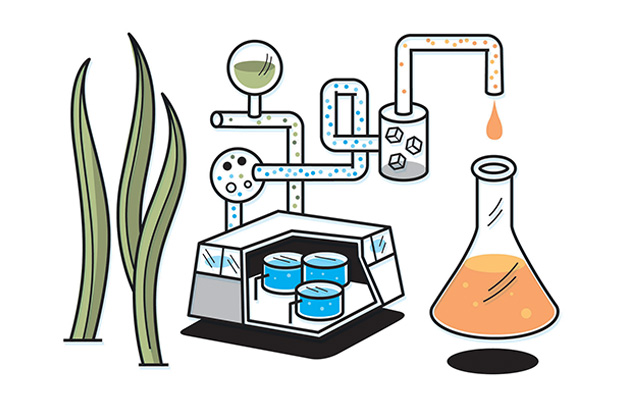Soylent
Green Chemistry
New water-based method of synthesizing organic compounds is better for our health, our wallets, and our environment

A chemist at UTA has come up with a safer, greener, less expensive, and more efficient method of synthesizing the organic compounds typically used in items like pharmaceuticals, cosmetics, and household chemicals. The key ingredient? Water.
"Using water as a solvent is ideal as it is benign, plentiful, cheap, and not harmful to the environment," says Morteza Khaledi, dean of the College of Science. "Our new system could facilitate cheaper, safer, and more efficient industrial reactions across a variety of sectors dependent on the synthesis of organic compounds."
Most organic synthesis requires volatile organic solvents that are expensive and can be significantly hazardous to human health and the environment. But Dr. Khaledi's new system is made of 80 to 90 percent water with fluoroalcohol and still produces higher yields than the purely organic solvents. It also allows the mixture to form two separate phases during the reaction, meaning that the resulting products can be separated easily out of the mixture by centrifuge. (Typically, industrial products require additional organic solvents to be separated and extracted.)
The organic solvent, Khaledi says, can even be recycled after the reaction.
"This is a clear step forward toward a ‘green' organic synthesis process," he continues.
Khaledi and his co-investigator, Nathaniel Weisner, a graduate student at North Carolina State University, published their work in the journal Green Chemistry.
Illustration by Harry Cambell

















